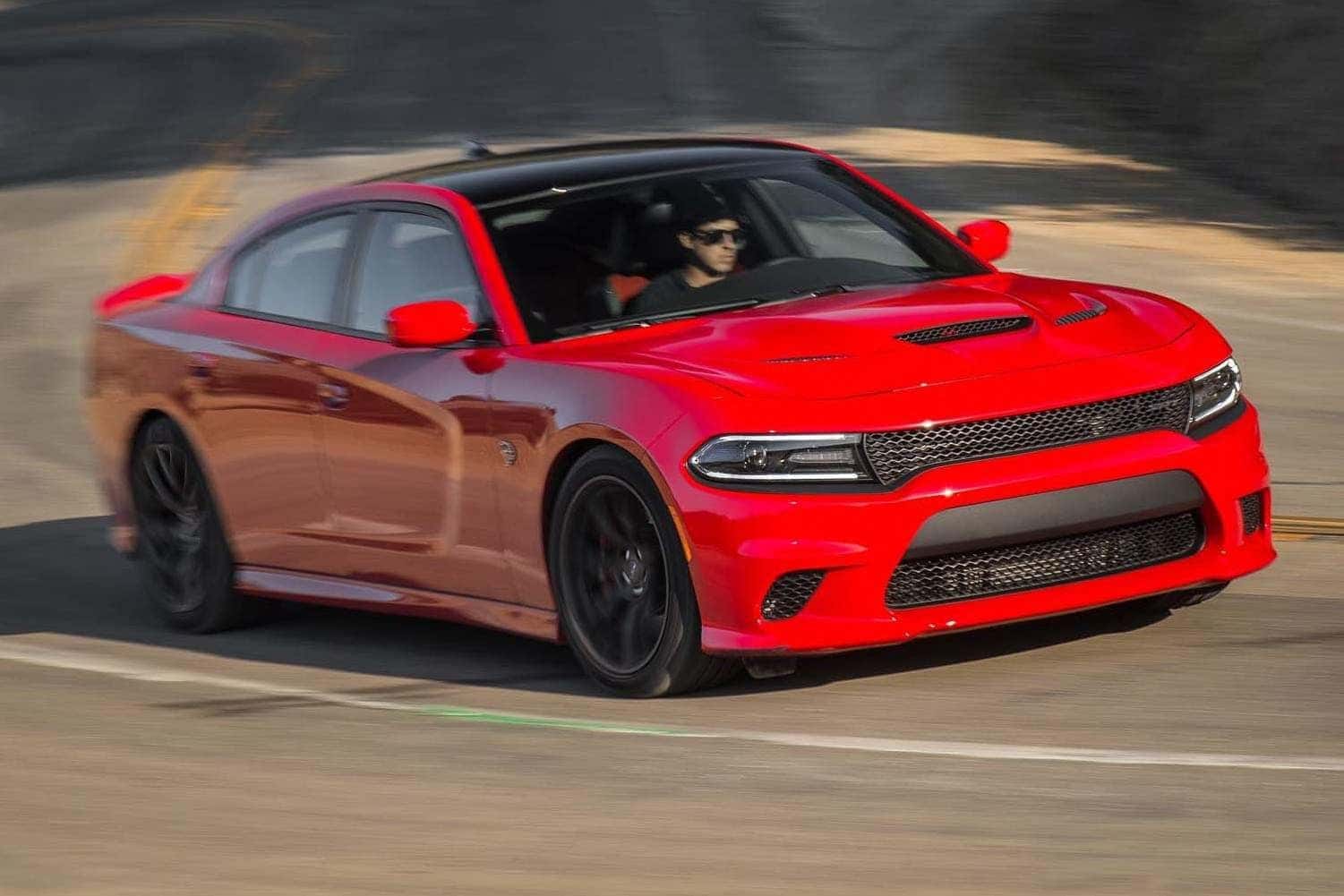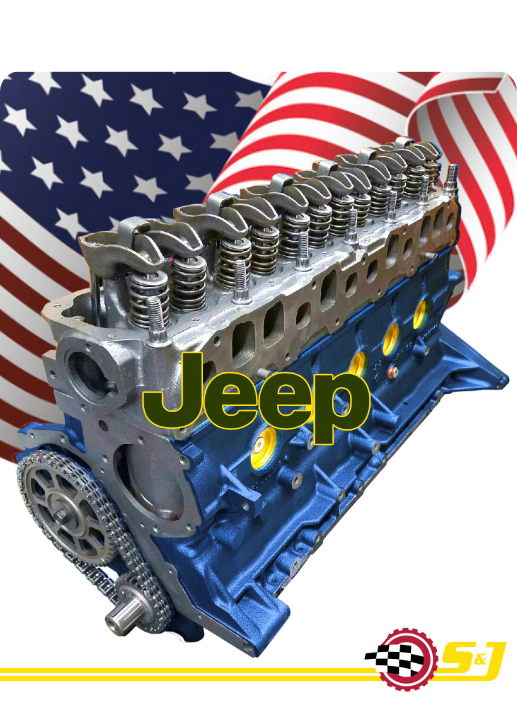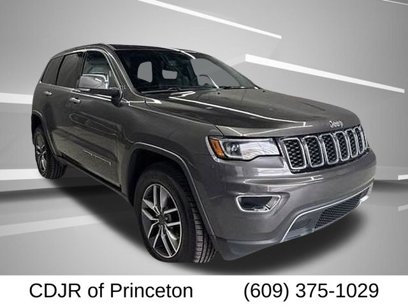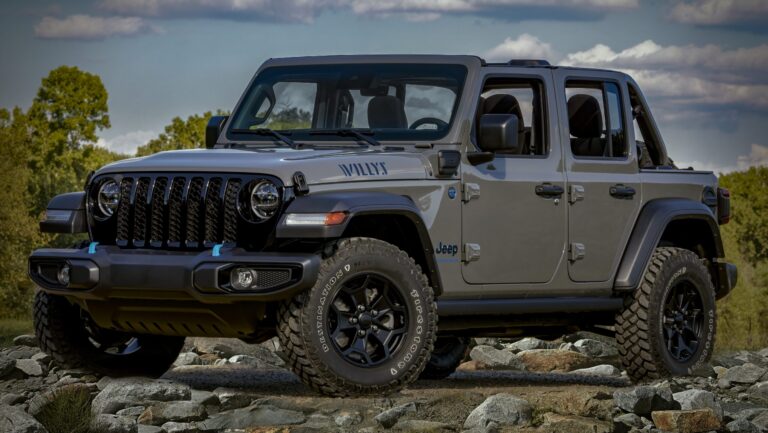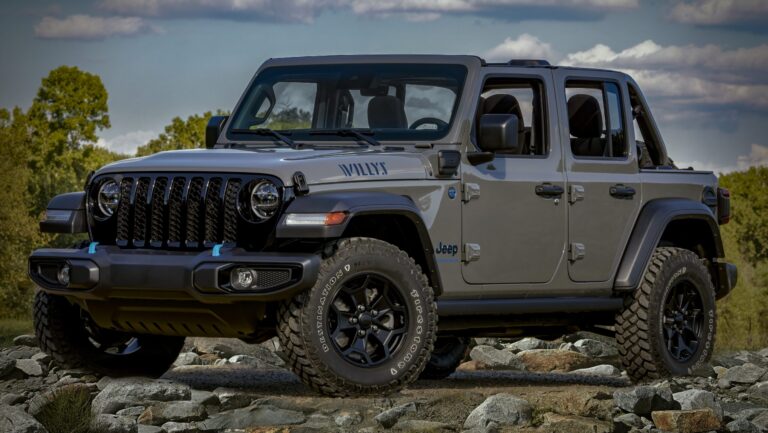SRT Jeep Engine Specs: A Comprehensive Guide to American Performance SUVs
SRT Jeep Engine Specs: A Comprehensive Guide to American Performance SUVs jeeps.truckstrend.com
The roar of an engine, the surge of immense power, and the unmistakable silhouette of an SUV that defies convention – these are the hallmarks of an SRT Jeep. Standing for "Street and Racing Technology," SRT represents the pinnacle of performance engineering within the Jeep lineup. For enthusiasts and prospective owners alike, understanding the intricate SRT Jeep Engine Specs is crucial. It’s not just about horsepower and torque; it’s about the sophisticated engineering, the relentless pursuit of speed, and the unique character each powerplant brings to these high-performance machines.
This comprehensive guide will delve into the heart of SRT Jeeps, exploring the evolution of their formidable engines, detailing their specifications, offering practical insights for owners, and providing a clear overview of what makes these American performance SUVs truly special.
SRT Jeep Engine Specs: A Comprehensive Guide to American Performance SUVs
The Genesis of Power: SRT Jeep Engine Lineage
Since its inception, SRT’s mission has been to infuse everyday vehicles with track-ready performance. When applied to the Jeep Grand Cherokee, this philosophy transformed a capable SUV into a veritable supercar slayer. The journey of the SRT Jeep engine is a fascinating progression of increasing displacement, advanced technology, and raw power, culminating in some of the most potent production SUVs ever built. Each generation introduced a new level of performance, building on the legacy of its predecessor while incorporating cutting-edge advancements.
Deep Dive: Key SRT Jeep Engines and Their Specs
The story of SRT Jeep engines primarily revolves around three iconic HEMI powerplants, each pushing the boundaries of what an SUV can achieve.
The Original Beast: 6.1L HEMI (WK1 Grand Cherokee SRT8)
The first iteration of the SRT Grand Cherokee, the WK1, burst onto the scene in 2006, immediately setting a new benchmark for performance SUVs. At its core was a purpose-built, high-performance HEMI engine.
- Engine Type: Naturally Aspirated 6.1L (370 cu in) HEMI V8
- Horsepower: 420 hp @ 6,200 rpm
- Torque: 420 lb-ft @ 4,800 rpm
- Compression Ratio: 10.3:1
- Key Features: This engine was a significant upgrade from standard HEMIs. It featured a forged steel crankshaft, strengthened connecting rods, lightweight pistons, and an aggressive camshaft profile. The intake manifold was specifically designed for high-flow, and the exhaust was tuned for a distinctive, aggressive note. Unlike later engines, it did not feature Multi-Displacement System (MDS) cylinder deactivation, focusing purely on performance.
- Performance: The 6.1L HEMI propelled the WK1 Grand Cherokee SRT8 from 0-60 mph in a blistering 4.6-5.0 seconds (depending on testing conditions) and completed the quarter-mile in the low 13-second range. Its top speed was electronically limited to 155 mph.
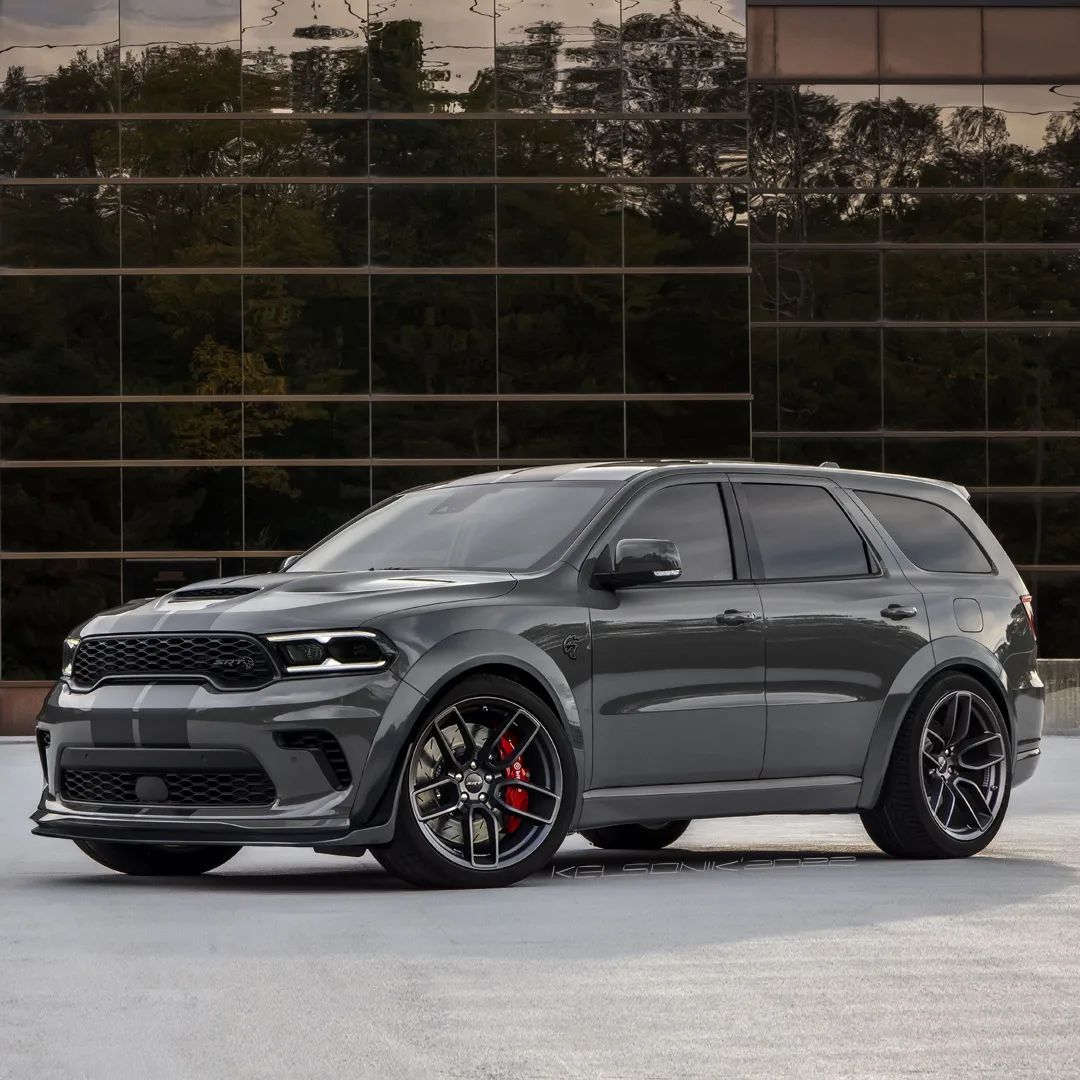
This engine established the SRT Jeep’s reputation as a performance powerhouse, blending SUV practicality with sports car acceleration.
The Refined Powerhouse: 6.4L (392) HEMI (WK2 Grand Cherokee SRT)
With the introduction of the WK2 generation in 2012, the SRT Grand Cherokee received a substantial upgrade under the hood. The 6.4L (392 cubic inch) HEMI brought more power, more torque, and refined technology.
- Engine Type: Naturally Aspirated 6.4L (392 cu in) HEMI V8
- Horsepower: 470 hp @ 6,000 rpm (2012-2017 models), 475 hp @ 6,000 rpm (2018-2021 models)
- Torque: 465 lb-ft @ 4,300 rpm (2012-2017 models), 470 lb-ft @ 4,300 rpm (2018-2021 models)
- Compression Ratio: 10.9:1
- Key Features: The 392 HEMI retained the robust foundation of its predecessor but incorporated significant advancements. It featured Variable Valve Timing (VVT) for optimized performance across the RPM range and the Multi-Displacement System (MDS), which could deactivate four cylinders under light load conditions to improve fuel economy. The engine block was cast iron, with aluminum heads, and it boasted a high-performance oil pump and improved cooling systems to handle the increased power output.
- Performance: The WK2 Grand Cherokee SRT could accelerate from 0-60 mph in approximately 4.4-4.5 seconds, with quarter-mile times in the high 12-second range. Top speed remained electronically limited to 160 mph, a slight bump from the WK1.

This engine solidified the SRT Grand Cherokee’s position as a top-tier performance SUV, offering a balance of brutal power and enhanced drivability.
The Apex Predator: 6.2L Supercharged Hellcat HEMI (WK2 Grand Cherokee Trackhawk)
In 2018, Jeep unleashed the ultimate expression of SRT performance: the Grand Cherokee Trackhawk. It eschewed natural aspiration for a supercharged behemoth, borrowed directly from the Dodge Hellcat lineup.
- Engine Type: Supercharged 6.2L (376 cu in) HEMI Hellcat V8
- Horsepower: 707 hp @ 6,000 rpm
- Torque: 645 lb-ft @ 4,800 rpm
- Supercharger: IHI twin-screw supercharger with 2.38 liters per revolution displacement, producing 11.6 psi (80 kPa) of boost.
- Compression Ratio: 9.5:1
- Key Features: This engine is a masterpiece of forced-induction engineering. To handle the immense power and heat generated by the supercharger, the 6.2L Hellcat engine features a forged steel crankshaft, high-strength forged alloy pistons, heat-treated aluminum-alloy cylinder heads, and a sophisticated cooling system with high-flow intercoolers. It also uses a unique oil pan and oil cooler to manage temperatures under extreme conditions. The induction system is massive, designed to feed the hungry supercharger efficiently.
- Performance: The Trackhawk redefined SUV performance, launching from 0-60 mph in a mind-boggling 3.5 seconds and covering the quarter-mile in 11.6 seconds at 116 mph. Its top speed was a staggering 180 mph.
The Trackhawk, with its Hellcat heart, became an instant legend, proving that an SUV could deliver supercar-level acceleration and top speed.
Beyond the Numbers: Why SRT Jeep Engines Stand Out
Beyond the impressive figures, SRT Jeep engines are renowned for several distinguishing characteristics:
- Engineering Prowess: These engines are not merely powerful; they are robust. Designed to withstand the immense stresses of high performance, they feature strengthened internal components, advanced cooling, and sophisticated engine management systems.
- Unmistakable Sound: The signature HEMI growl, amplified by SRT’s performance exhaust systems, is instantly recognizable. From the deep rumble at idle to the aggressive roar under wide-open throttle, the auditory experience is an integral part of the SRT Jeep appeal.
- Daily Drivability: Despite their immense power, these engines are surprisingly tractable in everyday driving. They offer smooth power delivery, especially the naturally aspirated versions, making them comfortable for commutes while always ready to unleash their full potential.
- Durability (with proper maintenance): While high-performance engines require specific care, the underlying HEMI architecture is known for its durability, allowing these vehicles to accumulate high mileage when properly maintained.
Owning an SRT Jeep: Practical Advice & Considerations
Owning an SRT Jeep is an exhilarating experience, but it comes with responsibilities specific to high-performance vehicles.
- Fuel Requirements: All SRT Jeep engines, especially the supercharged Hellcat, require premium-grade (91+ octane) gasoline. Using lower octane fuel can lead to detonation, reduced performance, and potential engine damage.
- Maintenance: Regular and diligent maintenance is paramount. This includes:
- Oil Changes: More frequent oil changes with high-quality synthetic oil are recommended due to the higher operating temperatures and stresses. Follow the manufacturer’s severe duty schedule.
- Cooling System: Ensure the cooling system is always in top condition. High-performance engines generate significant heat, and a robust cooling system is crucial for longevity.
- Spark Plugs: Performance engines can be harder on spark plugs; follow the recommended replacement intervals.
- Brakes & Tires: The immense power necessitates equally powerful brakes and high-performance tires. These components wear faster and are more expensive to replace than on a standard SUV.
- Insurance & Running Costs: Be prepared for higher insurance premiums due to the vehicle’s value and performance capabilities. Fuel consumption will also be significantly higher than a standard SUV, particularly with aggressive driving.
- Pre-Purchase Inspection (for used models): If buying a used SRT Jeep, a thorough pre-purchase inspection by a qualified mechanic familiar with high-performance vehicles is essential. Look for signs of abuse, modifications, or deferred maintenance.
SRT Jeep Engine Specs: Vehicle Price Guide
While the engines themselves aren’t typically sold separately to consumers, their "price" is intrinsically linked to the vehicles they power. Here’s an approximate guide to the original MSRP and current used market values for SRT Jeeps, providing context for the cost of owning these powerful machines.
| Model (Year Range) | Engine | Original MSRP (Approx. New) | Current Used Price (Approx. Range) |
|---|---|---|---|
| Grand Cherokee SRT8 (WK1, 2006-2010) | 6.1L Naturally Aspirated HEMI V8 | $40,000 – $50,000 | $15,000 – $28,000 |
| Grand Cherokee SRT (WK2, 2012-2017) | 6.4L Naturally Aspirated HEMI V8 | $60,000 – $70,000 | $30,000 – $48,000 |
| Grand Cherokee SRT (WK2, 2018-2021) | 6.4L Naturally Aspirated HEMI V8 | $68,000 – $75,000 | $45,000 – $60,000 |
| Grand Cherokee Trackhawk (WK2, 2018-2021) | 6.2L Supercharged Hellcat HEMI V8 | $86,000 – $100,000+ | $65,000 – $95,000+ |
Note: Prices are approximate and can vary significantly based on mileage, condition, optional features, location, and market demand.
Frequently Asked Questions (FAQ)
Q1: What is the main difference between the 6.4L HEMI and the 6.2L Supercharged Hellcat?
A1: The primary difference is forced induction. The 6.4L is naturally aspirated, relying solely on atmospheric pressure for air intake. The 6.2L Hellcat uses a large IHI twin-screw supercharger to force more air into the engine, dramatically increasing horsepower and torque.
Q2: Are SRT Jeep engines reliable?
A2: Yes, generally. The HEMI architecture is known for its robustness. However, as high-performance engines, they require meticulous maintenance (e.g., specific oil, regular changes, proper cooling system care) to maintain reliability and longevity. Neglecting maintenance will lead to issues.
Q3: Can I put regular gas in an SRT Jeep?
A3: No, it is strongly advised against. SRT Jeep engines are tuned for premium (91+ octane) fuel. Using regular gas can cause engine knocking (detonation), reduce performance, and potentially lead to long-term engine damage.
Q4: What is the average lifespan of an SRT Jeep engine?
A4: With proper maintenance, these engines can last well over 100,000-150,000 miles. Some owners report higher mileage, especially on the naturally aspirated versions. The supercharged Hellcat engine, due to its higher stress, might have a slightly shorter expected lifespan if constantly pushed to its limits, but proper care significantly extends it.
Q5: What are common modifications for SRT Jeep engines?
A5: Common modifications include cold air intakes, aftermarket exhaust systems, performance tunes (ECU flashes), upgraded pulleys (for supercharged engines), and sometimes camshaft upgrades or forced induction additions (for naturally aspirated models). However, significant modifications should always be performed by reputable tuners to avoid engine damage.
Conclusion
The SRT Jeep Engine Specs tell a story of relentless innovation and an unyielding commitment to performance. From the groundbreaking 6.1L HEMI to the earth-shattering 6.2L Supercharged Hellcat, each powerplant has contributed to defining a unique segment of high-performance SUVs. These engines are not just about raw power; they represent a fusion of American muscle, sophisticated engineering, and the enduring spirit of the Jeep brand.
For those who crave speed, sound, and versatility in one formidable package, an SRT Jeep with its iconic HEMI heart offers an unparalleled driving experience. Understanding these specifications is the first step in appreciating the sheer capability and passion engineered into every one of these incredible machines. They stand as a testament to what’s possible when performance and utility collide, leaving an indelible mark on automotive history.
